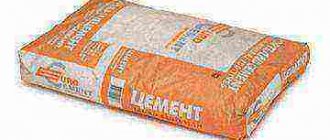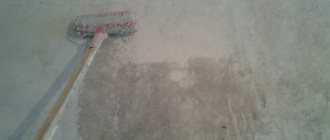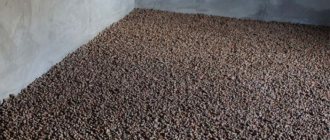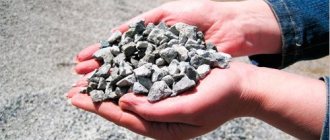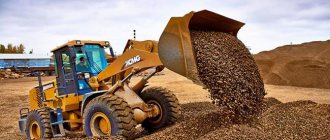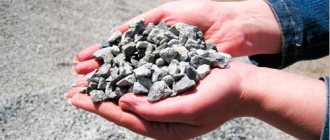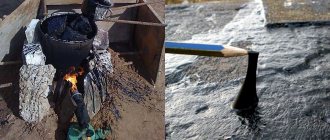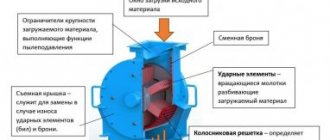What is decluttering?
The road surface must have maximum resistance to high constant loads. This quality determines the main purpose of this coating.
The top layer of asphalt or reinforced concrete is not enough to achieve maximum strength and long-term operation. It must have a reliable, and, most importantly, immovable support underneath it, excluding any movement. And since crushed stone is a bulk material with different fractions, conventional laying does not eliminate voids.
To ensure density and absence of space between the “grains”, declinching is intended. This technology used in road construction consists of redistributing crushed stone so that there are no voids left between the individual elements. This compaction of stones allows you to obtain a complete cushion, which ensures the maximum possible strength of the entire road surface.
Coating technology
For many years now, the coating technology has not changed. After preparing the base, regardless of the purpose of the future road network, the so-called finishing is carried out.
The final finish is a “black” base, the main purpose of which is to equalize operational loads. A special mineral material with high strength properties, which is specially treated with a binder, is widely used.
Asphalt concrete consists of: crushed stone, sand, mineral additives (enveloped in bitumen) and binder (high molecular weight organic compound). For laying, asphalt concrete mixtures with a wide temperature range are used - from hot to cold cycles. The laying process is carried out using the “tracking” system (laser) of the auto-stacker. ABS is laid on a surface previously primed with emulsion, after which it is thoroughly compacted.
Rasklintsovka: the essence of technology
The voids cannot be filled with crushed stone of the same fraction. The grain sizes must be different. So that they are distributed evenly and fill the space, the material is covered in layers, and the decluttering itself is carried out in several stages:
- Preparation;
- laying crushed stone;
- examination.
The use of special road rollers allows you to achieve maximum density and evenness of the laid stones. The number of declutters can vary from one to three. This depends on the wear resistance and strength requirements for road construction work and the source material.
Preparatory stage
Crushed stone base in critical areas cannot be laid on an unprepared base. To ensure high quality decluttering, the following work is carried out:
- Cut off the top layer of soil. If there is such a need, then a pit is dug. The soil is compacted.
- To protect crushed stone from the harmful effects of moisture, waterproofing is installed. The most commonly used material is geotextiles. It is laid out over the entire area of the future road surface.
- A sand cushion is laid, which improves the drainage properties of the road base. The thickness of this layer is determined at the design stage. It varies from 20 cm to 0.5 m.
When the preparation is completed, they move on to the main work.
Sand bedding
Sand backfill is used for almost all known types of foundations and serves to maintain a sufficient level of drainage.
Sand serves to maintain good shock absorption and drainage of the road surface, and therefore road builders are very careful in choosing it. River sand is often used, with grains of 1.7 -2.3 mm, which is considered medium in size. Great importance is also paid to the purity of the material, i.e. clay impurities are excluded to the maximum. The sand cushion is carefully compacted and a geofabric is laid, which will separate it from a layer of crushed stone and gravel.
Splintering of crushed stone
It is carried out in several successive stages:
First stage. Involves laying crushed stone with a fraction of 20-70 mm. Large stones of 70-120 mm are used much less frequently. Most often they are used during road work. The laid out layer of bulk material is compacted, and the top is “covered” with mesh or concrete, brick waste.
Second phase. It consists of laying a fraction of 20-40. This layer should be 20 cm thick and compacted with a vibrating plate or roller at least five times. To prevent overheating when grain friction occurs, the crushed stone is watered each time.
Third stage. The small fraction - stones ranging in size from 5 to 20 mm - is placed on a compacted base. Thus, the smallest grains of crushed stone are at the top. The final layer is made quite thin.
If hard-to-compact crushed stone is used during the work, it is treated with a binding organic substance before decluttering. Its consumption varies from 2.5 to 4 liters per square meter.
Main concepts and technology
In the issue of the stability of the foundation to serious loads, an important role is played by such technology as “crushed stone declinging”. Its main purpose is to create a strong and durable foundation.
The essence of the crushed stone crushing process is that during laying, the resulting voids are filled by filling fractions of different sizes, which makes the base more durable. Here it is important to follow a certain sequence of actions: 1. First, the top layer of soil is cut off and a pit is dug, if necessary. Next, the soil is compacted, and the bottom is laid out with geotextiles for waterproofing. 2. The next step is the formation of a sand cushion in order to improve drainage properties. The thickness of the sand layer is from 20 to 50 cm. 3. Next, crushed stone of fraction 40-70 is used, in rare cases - 70-120 mm. Such fractions are more often used in road work. Crushed stone is compacted with special mechanisms, through which the gravel is compacted. A mesh or waste concrete or brick is placed on top. 4. Next, use a fraction of 20-40. The layer thickness is 20 cm. The resulting cushion is compacted at least 5-6 times using a roller or vibrating plate. After each compaction, the base is watered to avoid overheating from friction of the grains. 5. Next, alignment is carried out in accordance with the specified parameters. After that, small stones (5-20 mm) are selected for declinging, laying them in a thin layer. 6. Difficult-to-compact crushed stone is additionally treated with an organic binder at a consumption of 3 – 4 l/m2.
7. The completion of leveling of the tamping surface can be determined by the absence of settlement and mobility noticeable to the eye, as well as the absence of a wave before impact on the cushion. 8. The base obtained during the leveling process is covered with sand to prevent contamination. To check the quality of the base, a special device is used, which, through dynamic probing, determines the degree of shrinkage. 9. The number of declutters varies from one to three (maximum). This depends on the requirements for strength and wear resistance during construction and road work.
Checking the decling
The essence of the technology is to construct a crushed stone cushion with a high degree of density, strength, reliability, without the absence of any movement. It is impossible to determine these parameters accurately by visual inspection. A special device is used for this.
The operating principle of such a device is based on dynamic sensing. Several blows applied by the device allow you to record the degree of shrinkage. If it meets the stated requirements, the crushed stone, regardless of the fraction, is compacted efficiently, you can continue laying and compacting the next layer with a roller or complete the work. It depends on how many declaring needs to be done.
To protect the resulting crushed stone base from possible contamination, it is covered with sand. This is especially true in situations where a certain period of time is waited between the decluttering and the subsequent laying of the roadway.
Gravel and crushed stone base
When constructing some highways with increased vehicle traffic, a decision is made to use a combined type of “cushion” - gravel and crushed stone. When constructing the same sidewalks, one of the layers is used to reduce costs and, accordingly, expenses.
The base on which layers of crushed stone or gravel are laid is the load-bearing (or main) layer of the “road pavement”, since it has the most important role - it absorbs the traffic load and distributes it to the roadbed. Its role is great, and the work on constructing a crushed stone base is the most labor-intensive. Crushed stone is poured in layers followed by compaction. Only strictly sorted crushed stone or gravel of various fractions are used.
The technological cycle consists of the following stages:
- Placer of coarse crushed stone (h 0.15 -0.25 m).
- Leveling with a motor grader.
- Thorough sealing.
- Placer of fine-grained crushed stone (h 0.1 – 0.2 m).
- Leveling with a motor grader.
- Seal with spill.
- Finishing scattering, compaction and pouring with declanting fraction.
Important nuances
The gradual filling of crushed stone, accompanied by compaction using specialized construction equipment, is carried out solely on the basis of accurate calculations. Without determining the required amount of material of one, second, third fraction, it is impossible to achieve high density and strength of the base.
The standards and features of the pavement being laid, operating conditions, and regional characteristics are taken into account. The strength grade of the original crushed stone material is of no small importance. If it is crushed stone of the M600 grade, it is enough to carry out declinging in one stage. This applies to material supplied in different fractions, or the use of crushed stone-sand mixture.
Consumption of crushed stone during decluttering
It is determined by GOST 8267 and indicates the amount of crushed stone material of various fractions for laying a base equal to one thousand square meters. If fractions of 5-10, 10-20 and 20-40 are used, about 10 cubic meters will be required.
A similar consumption is typical when using the largest fraction, the grain size of which ranges from 70 to 120 mm. The lack of increase in the amount of required material is due to the size of the stone.
The largest amount of material is required for laying the first layer. To lay out a foundation of 1 thousand square meters. m., you need about 15 cubic meters of crushed stone with a grain fraction of 40-70 mm.
Construction of crushed stone bases and coatings using the wedge method
9.3.2.1 When constructing crushed stone bases and coverings using the wedging method, work is performed by layer-by-layer wedging of the main fraction of crushed stone into small fractions.
The thickness of the layer during layer-by-layer compaction is no more than 15 cm. The residual porosity of the layer in the compacted state should be no more than 20% for crushed stone of the first group and no more than 15% for crushed stone of the second group. 9.3.2.2 The installation of a crushed stone layer using the wedge method includes the following work:
– distribution of coarse crushed stone (crushed stone of the main fraction) over the surface of the base;
– rolling the crushed stone layer without watering to detect possible irregularities and subsequently correct them;
– compaction of coarse crushed stone with simultaneous (if necessary) watering;
– distribution of various fractions of split crushed stone with compaction of each fraction.
When constructing coatings, it is allowed to use crushed stone of two or three proppant fractions; when constructing foundations - one or two.
When using asphalt granulate according to STB 1705 for crushed stone wedging, the top layer of the base is loosened to a depth of 10 cm, crushed stone is mixed with asphalt granulate, the layer is leveled and compacted.
9.3.2.3 Crushed stone is compacted with rollers in three stages:
– at the first stage, a scattering of large crushed stone is compacted until a stable position of individual crushed stones is achieved;
– at the second stage, the necessary structure of the crushed stone layer is formed due to the mutual wedging of crushed stone;
– at the third stage, a dense crushed stone layer is formed due to the sequential wedging of a layer of coarse crushed stone with small crushed stone, a wedge, stone fines, screenings and asphalt granulate.
The number of roller passes is determined by test compaction.
9.3.2.4 Compaction of crushed stone with rollers should begin from the edges, then approach the roller passage to the middle and overlap the previous passage trace by 1/3 of the width of the compaction strip. At the first and second stages, the base is compacted with rollers on pneumatic tires weighing at least 16 tons with an air pressure in the tires of 0.6-0.8 MPa, trailed vibrating rollers weighing at least 6 tons, lattice rollers weighing at least 15 tons, self-propelled smooth rollers - weighing at least 10 tons and combined - weighing more than 16 tons. The total number of passes of static type rollers must be at least 30 (10 at the first stage and 20 at the second), combined types - at least 18 (6 and 12) and vibration type - at least 12 (4 and 8).
The number of passes is determined by a trial compaction. Water pouring at the first stage of compaction is provided only for crushed stone of the second group; at the second and third stages of compaction, water pouring is provided for crushed stone of all groups. The rate of water bottling depends on weather conditions during the construction period, the ability of crushed stone to compact, the degree of its contamination and is specified during the work process.
9.3.2.5 Foundations made of crushed stone of strength grades less than 600 and plasticity grades Pl2, PlZ are compacted with rollers on pneumatic tires weighing no more than 16 tons in no less than 20 passes or with vibrating rollers.
9.3.2.6 When operating rollers with smooth rollers, compaction can be considered complete if the crushed stone placed on the surface of the crushed stone layer is destroyed under the roller drum.
Additional compaction, if necessary, should be carried out by regulating the movement of construction vehicles along the width of the base (covering).
9.3.2.7 The consumption of proppant material is assigned depending on the size and strength of the crushed stone of the main fraction and the type of structural layer and is taken in accordance with Table 7.
Table 7 – Consumption of proppant material
| Layer type | Size of the main fraction of crushed stone, mm | Strength of crushed stone | Consumption of proppant fraction, m3, per 1000 m2 with crushed stone size, mm | |||
| 20-40 | 10-20 | 5-10 | 0-5 | |||
| Base | 40-80 (70) | 800 or more | — | 25/15 | 15/10 | — |
| Base | 40-80 (70) | 600 or less | — | — | ||
| Base | 80 (70)-120 (150) | 600 or more | 10 (20) | — | ||
| Base | 80 (70)-120 (150) | 400 or less | 10 (20) | — | — | — |
| Coating | 20-80 (70) | 800 or more | — | 20/15 | 15/10 | 15/10 |
| Coating | 20-80 (70) | — | ||||
| Notes: 1. The numerator shows the consumption of proppant material from igneous, metamorphic and sedimentary non-carbonate rocks; in the denominator - from sedimentary carbonate rocks. 2. When constructing crushed stone bases, crushed stone of fractions of 5-10 mm and screenings of 0-5 mm are used if transport movement on the base is possible. 3. When constructing a base made of crushed stone of a fraction of 40-70 mm, one-time wedging is allowed using a mixture of crushed stone and crushed stone-sand fractions of 5-20, 0-20, 0-10 mm, and when using crushed stone of 70-120 (150) mm - fractions 5-40 mm. 4. For the construction of foundations, crushed stone of a fraction of 25-60 mm in accordance with GOST 7392 can be used with crushed stone of a fraction of 5-20 mm in accordance with GOST 8267 and sand from crushing screenings or asphalt granulate in accordance with the technological map. |
9.3.2.8 Materials for constructing crushed stone foundations using the wedge method must comply with current technical regulations and be used in accordance with design documentation and technological maps.
